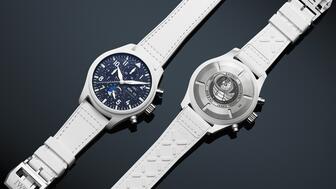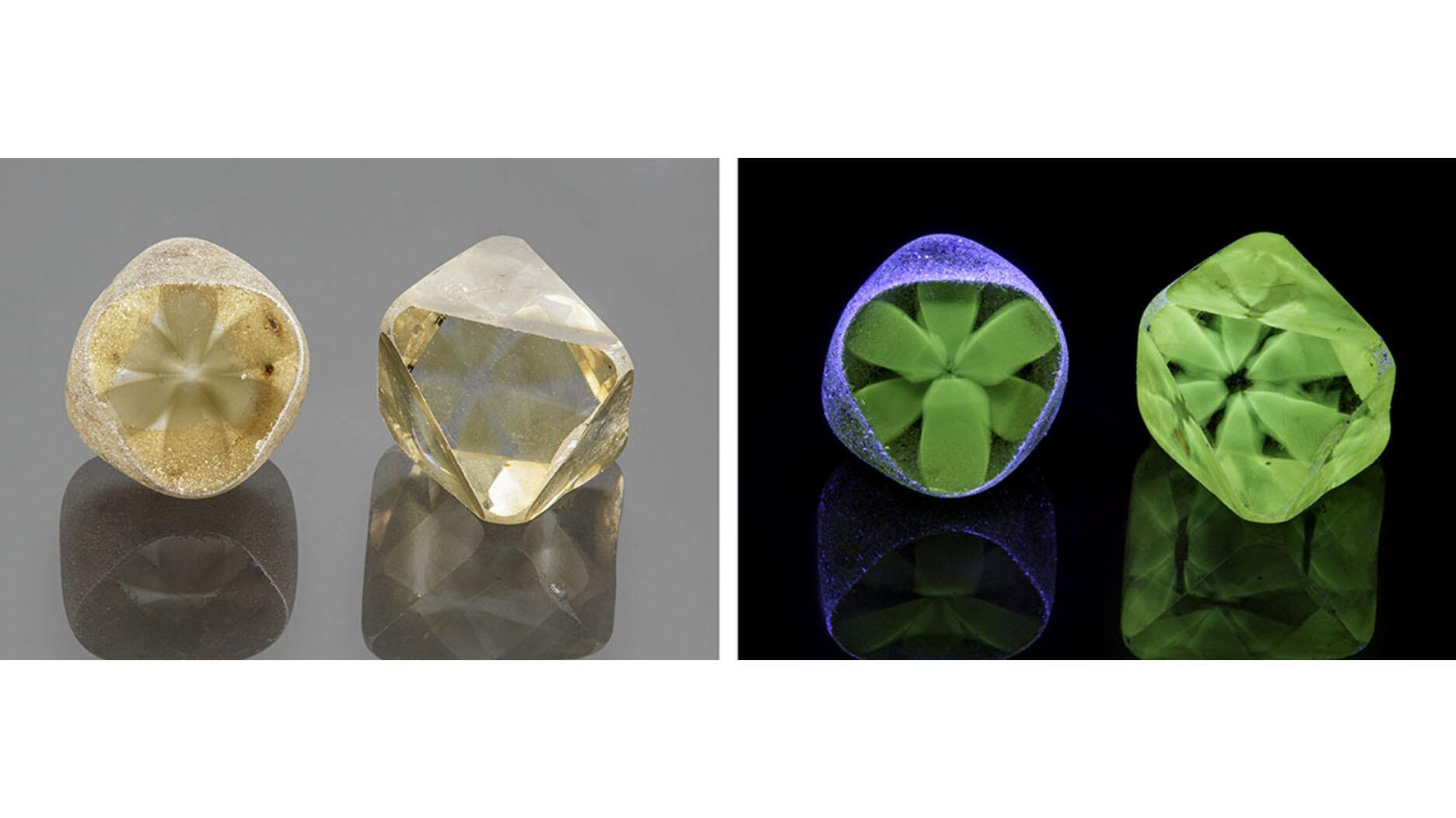GIA Adds ‘Peacock’ Color Range Comment to Pearl Reports
The change comes following a year of research into how the trade determines what constitutes “peacock” color in pearls.

When a pearl, strand or jewelry item meets the parameters for the Peacock color, GIA will add a comment to the report that states, “This pearl is often referred to as a ‘Tahitian’ cultured pearl in the trade, and it falls into the select color range that is known as ‘peacock.’”
Variations of the phrase also may be used.
The “select color range” was identified through GIA’s industry analysis on what was commonly agreed upon within the pearl trade as the “peacock” color.
GIA’s general description of that color range is, “a body color with a hue that contains green, of mid-to-strong saturation and mid-to-dark tone, and with moderate or stronger overtone (usually pink, but may be other hues) or orient.”
“This change comes about after a year of researching the historical and current use of the color term ‘Peacock,’ as well as considered industry feedback,” said Tom Moses, GIA executive vice president and chief laboratory and research officer.
“Based on our industry findings and GIA’s mission to educate consumers to make informed purchasing decisions, adding this descriptive trade term to reports better serves consumers.”
Since 1949, GIA has been a leader in the identification and classification of natural and cultured pearls, according to its website.
The lab has contributed to revising the U.S. Federal Trade Commission’s pearl guidelines for the jewelry industry and is responsible for working with major pearl companies globally to develop comprehensive standards for describing pearls.
Today, GIA uses seven criteria to classify and describe pearl quality. The 7 Pearl Value Factors are: Size, Shape, Color, Nacre, Luster, Surface and Matching.
There will be no additional fee for this change. To learn more about GIA’s pearl reports and services, visit its website.
The Latest

Said to be the first to write a jewelry sales manual for the industry, Zell is remembered for his zest for life.

The company outfitted the Polaris Dawn spaceflight crew with watches that will later be auctioned off to benefit St. Jude’s.

A buyer paid more than $100,000 for the gemstone known as “Little Willie,” setting a new auction record for a Scottish freshwater pearl.

Supplier Spotlight Sponsored by GIA.

Anita Gumuchian created the 18-karat yellow gold necklace using 189 carats of colored gemstones she spent the last 40 years collecting.


The giant gem came from Karowe, the same mine that yielded the 1,109-carat Lesedi La Rona and the 1,758-carat Sewelô diamond.

The three-stone ring was designed by Shahla Karimi Jewelry and represents Cuoco, her fiancé Tom Pelphrey, and their child.

Supplier Spotlight Sponsored by GIA

The Manhattan jewelry store has partnered with Xarissa B. of Jewel Boxing on a necklace capsule collection.

Acting as temporary virtual Post-it notes, Notes are designed to help strengthen mutual connections, not reach new audiences.

The jewelry historian discusses the history and cultural significance of jewelry throughout time and across the globe.

From fringe and tassels to pieces that give the illusion they are in motion, jewelry with movement is trending.

The designer and maker found community around her Philadelphia studio and creative inspiration on the sidewalks below it.

The change to accepted payment methods for Google Ads might seem like an irritation but actually is an opportunity, Emmanuel Raheb writes.

The industry consultant’s new book focuses on what she learned as an athlete recovering from a broken back.

The fair will take place on the West Coast for the first time, hosted by Altana Fine Jewelry in Oakland, California.

Hillelson is a second-generation diamantaire and CEO of Owl Financial Group.

Submissions in the categories of Jewelry Design, Media Excellence, and Retail Excellence will be accepted through this Friday, Aug. 23.


Known as “Little Willie,” it’s the largest freshwater pearl found in recent history in Scotland and is notable for its shape and color.

Clements Jewelers in Madisonville cited competition from larger retailers and online sellers as the driving factor.

The gemstone company is moving to the Ross Metal Exchange in New York City’s Diamond District.

Most of the 18th century royal jewelry taken from the Green Vault Museum in Dresden, Germany, in 2019 went back on display this week.

The Pittsburgh jeweler has opened a store in the nearby Nemacolin resort.

With a 40-carat cabochon emerald, this necklace is as powerful and elegant as a cat.

The Erlanger, Kentucky-based company was recognized for its reliability when it comes to repairs and fast turnaround times.

Unable to pay its debts, the ruby and sapphire miner is looking to restructure and become a “competitive and attractive” company.

The trend forecaster’s latest guide has intel on upcoming trends in the jewelry market.




























